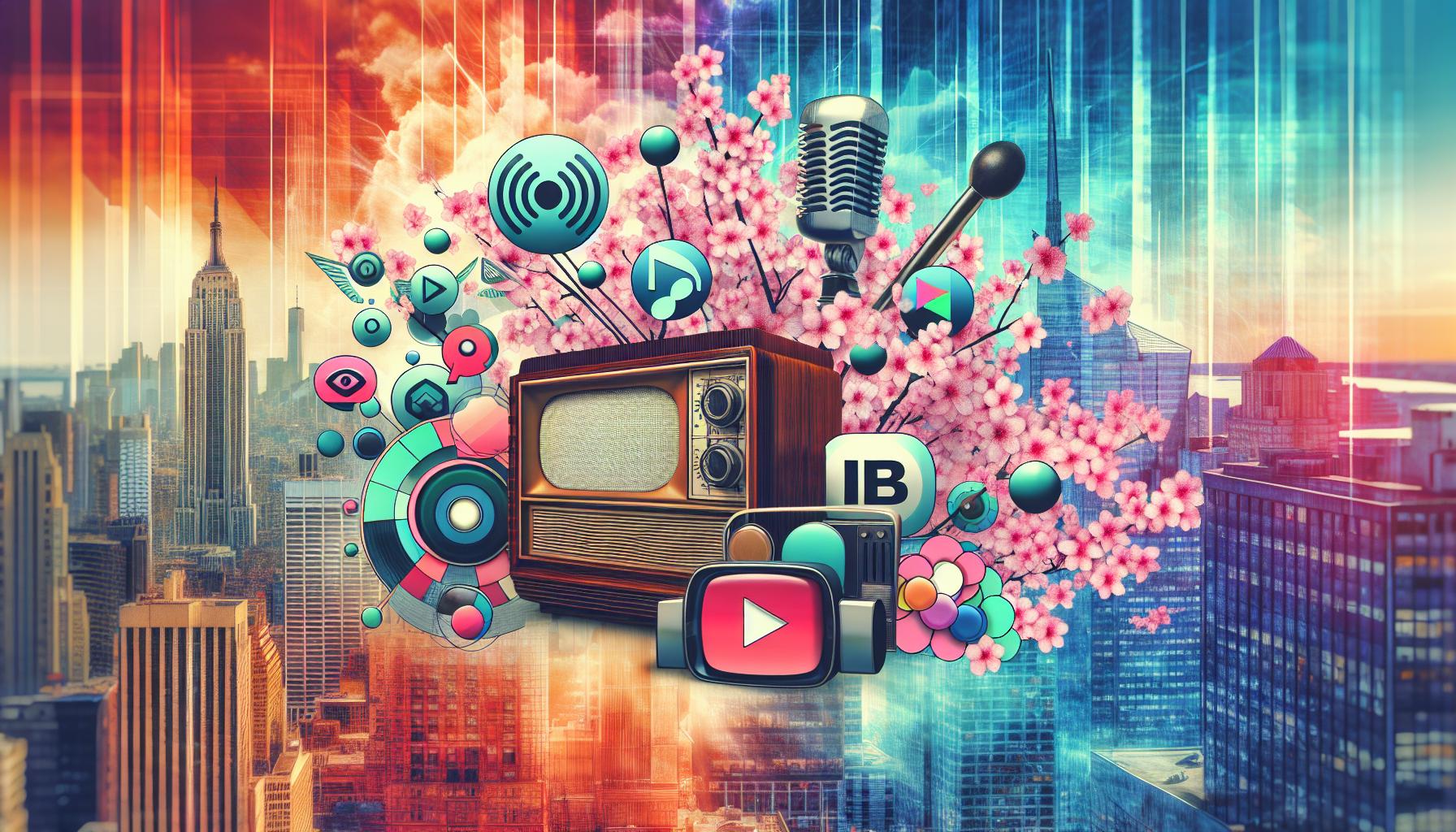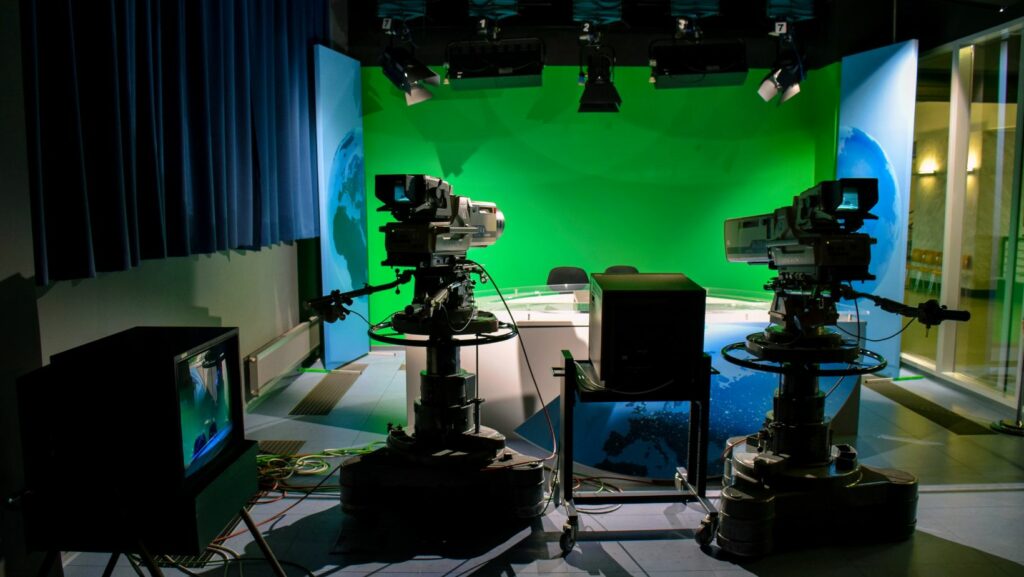Broadcast Media Examples
- Various Platforms: Broadcast media encompasses a range of platforms including television, radio, streaming services, and podcasts that effectively disseminate information to large audiences.
- Diverse Content: Television and radio provide a mix of programming from news and entertainment to educational content, reflecting societal values and trends.
- Influential Networks: Major television networks like ABC, NBC, and CBS, along with popular radio stations such as NPR and iHeartRadio, significantly shape public opinion and community engagement.
- Streaming Evolution: Platforms like Netflix, Hulu, and Disney+ have transformed content consumption by providing on-demand access, influencing how audiences engage with media.
- Cultural Impact: Broadcast media plays a critical role in cultural exchange and awareness, fostering discussions on social issues and promoting diverse perspectives.
- Accessibility Matters: The wide reach of broadcast media, especially in local communities, ensures crucial information dissemination, enhancing public involvement and connectivity.
Broadcast media plays a crucial role in shaping public opinion and disseminating information. From television to radio, these platforms reach vast audiences, making them powerful tools for communication. Understanding the various examples of broadcast media can provide insight into how information is shared and consumed in today’s fast-paced world.
As technology evolves, so do the formats and methods of broadcasting. Traditional television networks, cable channels, and radio stations coexist with streaming services and podcasts, creating a diverse landscape. This article explores key examples of broadcast media, highlighting their significance and impact on society. Whether it’s the evening news or a popular radio show, each example offers a unique perspective on how stories are told and how audiences engage with them.
Overview of Broadcast Media
Broadcast media delivers audio and visual content to a wide audience through various platforms. Key examples include television networks, radio stations, and online streaming services. These media types play essential roles in informing, entertaining, and engaging the public.
Television
Television encompasses a range of content types, from news to entertainment. Major networks like ABC, NBC, and CBS operate nationwide, while cable and satellite providers expand access to niche channels. These platforms account for billions in advertising revenue annually, influencing public perception and awareness.
Radio
Radio serves as an immediate source of news, music, and talk shows. Local stations and national networks like NPR and iHeartRadio provide diverse programming. Digital streaming options enhance accessibility, allowing audiences to listen anytime, anywhere. Radio remains a vital medium for emergency alerts and community engagement.
Streaming Services
Streaming services, such as Netflix, Hulu, and Disney+, revolutionized content consumption. These platforms offer on-demand access to shows, movies, and documentaries. Live streaming options are also available, merging traditional broadcast characteristics with modern viewing habits. This evolution shapes audience expectations and viewing practices.
Podcasts
Podcasts represent a growing segment of broadcast media. They provide an accessible format for storytelling, interviews, and discussions. Popular platforms like Spotify and Apple Podcasts contribute to the rise of this medium, reaching millions of listeners with diverse content. The increase in podcast production showcases its relevance in contemporary media consumption.
Types of Broadcast Media

Broadcast media includes various platforms that disseminate audio and visual content to large audiences. The main types are television broadcasting, radio broadcasting, and digital broadcast media.
Television Broadcasting
Television broadcasting delivers a range of content, including news, entertainment, sports, and educational programming. Major television networks like NBC, ABC, CBS, and FOX provide national coverage, while local stations cater to regional audiences. Programming varies from scripted shows and reality television to documentaries and live events. Advertising revenues significantly impact content production, driving monetization strategies and shaping viewer expectations.
Radio Broadcasting
Radio broadcasting serves as an immediate source of information and entertainment. It encompasses local and national stations that broadcast music, talk shows, sports commentary, and news updates. Prominent networks, such as NPR and iHeartRadio, offer diverse programming aimed at varied demographics. Radio’s accessibility makes it a vital medium for community engagement and outreach, especially in areas lacking reliable internet access.
Digital Broadcast Media
Digital broadcast media includes streaming platforms that distribute video and audio content online. Services like Netflix, Hulu, and Spotify provide on-demand access, allowing users to control their viewing and listening experiences. These platforms utilize algorithms to personalize content based on user preferences, enhancing engagement. The rise of podcasts within digital broadcast media illustrates shifting consumption patterns, offering niche topics and diverse voices beyond traditional media constraints.
Notable Broadcast Media Examples

Broadcast media consists of influential platforms that deliver news, entertainment, and educational content to a broad audience. Key examples span television networks, radio stations, and streaming services.
Major Television Networks
Major television networks play a crucial role in information dissemination and audience engagement. Examples include:
- ABC: Known for its diverse programming, including news shows like “World News Tonight” and popular series like “Grey’s Anatomy.”
- NBC: Features a wide range of content, from the “Today” show to iconic dramas such as “This Is Us.”
- CBS: Provides news coverage, sports events like the Super Bowl, and popular shows such as “NCIS.”
- Fox: Offers a mix of news, entertainment, and reality shows, including “The Simpsons” and “The Masked Singer.”
These networks cater to regional tastes through local affiliates, ensuring broad viewer engagement and significant advertising revenue.
Popular Radio Stations
Popular radio stations serve as essential sources of news and entertainment in many communities. Notable examples include:
- NPR (National Public Radio): Offers in-depth news coverage, cultural programming, and infotainment shows like “All Things Considered.”
- BBC Radio: Provides diverse content, including world news, music, and storytelling programs that reach global audiences.
- iHeartRadio: Hosts numerous channels featuring popular music, talk shows, and podcasts tailored to various demographics.
- Local AM/FM Stations: Often focus on regional news, music, and community events, fostering local engagement.
These stations provide immediate access to information, adapting programming to meet audience demands across different markets.
Streaming Services
Streaming services have transformed content consumption patterns, offering extensive on-demand programming. Prominent examples include:
- Netflix: Offers a vast library of films, series, and documentaries, producing original content that captivates global audiences.
- Hulu: Combines on-demand viewing with live TV options, catering to diverse tastes, including current TV episodes and exclusive shows.
- Amazon Prime Video: Features original series, films, and a vast selection of rentals and purchases, appealing to varied preferences.
- Disney+: Delivers family-friendly content, including beloved films and series from the Disney, Pixar, Marvel, and Star Wars franchises.
These services personalize user experience through algorithms, revolutionizing how audiences consume media and engage with stories.
Impact of Broadcast Media

Broadcast media plays a crucial role in reflecting and shaping societal values, trends, and behaviors. It serves as an influential platform that fosters cultural exchange and information accessibility.
Cultural Influence
Broadcast media significantly affects culture by shaping public perceptions and norms. It delivers diverse programming that reflects societal dynamics, promoting cultural awareness and appreciation. Major television networks and radio stations often highlight pivotal events, social movements, and artistic expressions, contributing to shared cultural identities. Shows like “Saturday Night Live” or news specials during significant events can catalyze discussions on social issues, influencing public discourse. Moreover, the ability of programming to incorporate various perspectives allows audiences to engage with different cultures, encouraging tolerance and understanding across communities.
Accessibility and Reach
Broadcast media’s accessibility maximizes its impact on society. Television and radio transmit content widely, reaching audiences in urban and rural areas alike. For instance, local radio stations provide vital information during emergencies, ensuring communities stay informed. In addition, modern streaming platforms enhance access by allowing users to consume content on-demand, breaking geographic barriers. This broad reach ensures a diverse audience, allowing for varied viewpoints to emerge. Consequently, broadcast media remains a powerful tool for information dissemination, having the potential to influence millions simultaneously through targeted content and messaging.
Dissemination and Public Engagement
Broadcast media continues to play a crucial role in shaping the landscape of information dissemination and public engagement. Its ability to adapt to technological advancements ensures that it remains relevant in a rapidly changing world. From traditional television and radio to innovative streaming platforms and podcasts, broadcast media offers diverse content that resonates with audiences.
The impact of broadcast media extends beyond entertainment; it influences societal values and fosters cultural exchange. As it reaches millions, it not only informs but also connects communities, making it an indispensable part of modern life. As the media landscape evolves, the significance of broadcast media in shaping public discourse and community engagement will undoubtedly endure.

